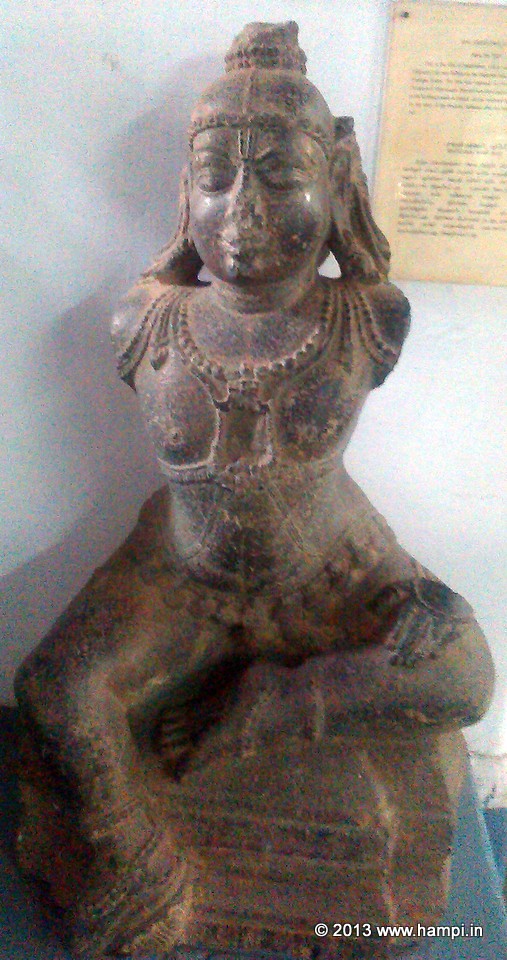Balakrishna

P
erhaps the most historically significant artifact of Hampi is the image of Balaskrisha - Lord Krishna in infant form. This originally belonged to a temple in the Udayagiri fort, in the present day Orissa.The most famous of the Vijayanagara kings, Krishnadevaraya brought this Image from Udayagiri as a war trophy after defeating the Gajapati kings of Kalinga in 1512CE, after a year long siege of the Udayagiri fort.
In commemoration to this significant victory of the Vijayanagara empire, he constructed the Krishna Temple and the Krishna Bazaar village in front of it. A large plank with inscription, dated 1513 CE, elaborating circumstance is located inside the Krishna Temple. You can see this next to the porch inside the temple complex.
History did not end there. Years later, the Vijayanagara empire was defeated by the neighboring sultanates in 1565CE. The capital faced the brunt of it. It's temples where damaged, the Balakrishna idol included. Hampi went into oblivion. See History of Vijayanagara
A couple of centuries later, during the later part of the colonial period, Hampi again came to limelight, this time as an important archaeological site.
A.H. Longhurst, then Superintendent Archaeologist of the Madras Presidency moved this idol to the museum at Madras in 1917 CE, for he thought it was the safer place than left unprotected in the ruins site. Incidentally he was first to author the a detailed travel guide for the Hampi ruins.
The 'trail' of this this Krishna image all the way from Udayagiri to Hampi to Chennai marks major milestones in this history of the region.
The seated Krishna is with its left hand resting on the thigh. Both the hands are missing. The left hand probably held the butterball. The fingers of right hand is visible.

The image of the Balakrishna , that was brought from Udayagiri as war trophy . This image is on display at the state museum at Chennai
The image of the Balakrishna , that was brought from Udayagiri as war trophy . This image is on display at the state museum at Chennai .

The Balakrishna image at Museum in Chemmai
The Balakrishna image at Museum in Chemmai
